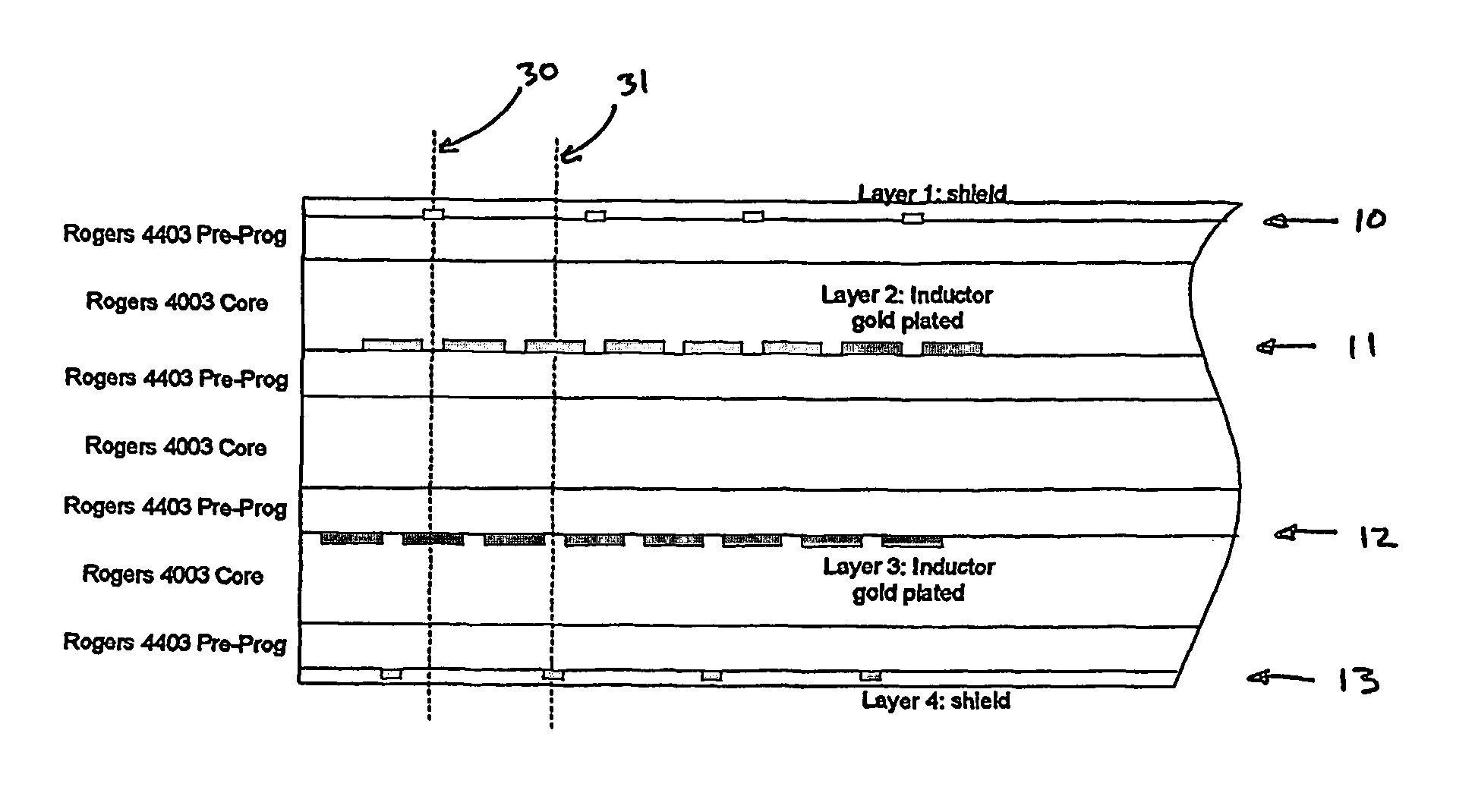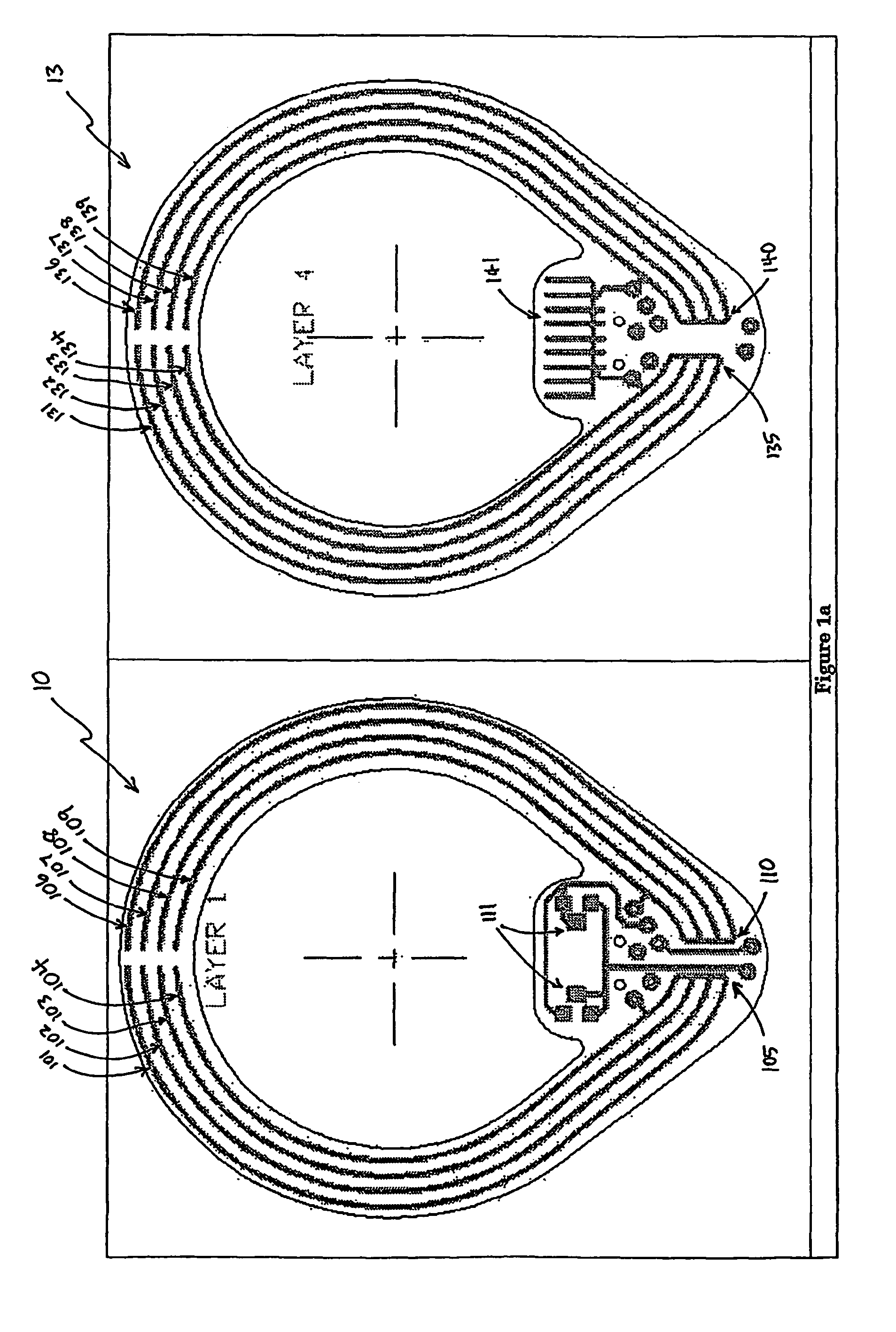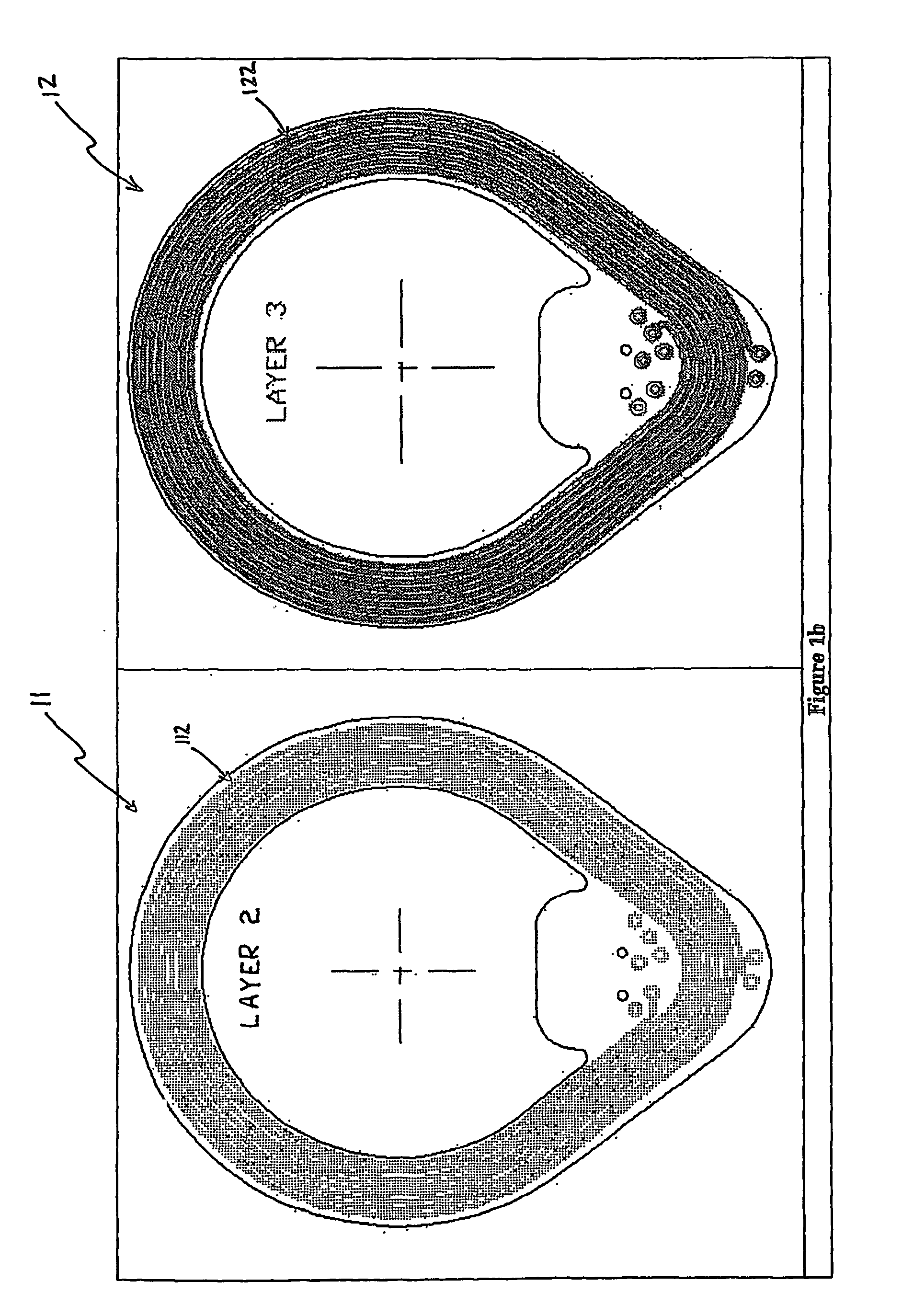Transceiver coil for auditory prosthesis
a transceiver coil and auditory prosthesis technology, applied in the field of transceiver coils for auditory prosthesis, can solve the problem of not being able to derive suitable benefits from conventional hearing aid systems, and achieve the effects of reducing materials and weight, improving construction efficiency, and simplifying the shape of the casing
- Summary
- Abstract
- Description
- Claims
- Application Information
AI Technical Summary
Benefits of technology
Problems solved by technology
Method used
Image
Examples
Embodiment Construction
[0061]FIGS. 1a and 1b illustrate the layers of a transceiver for an auditory prosthesis in accordance with the present invention. The embodiment shown is based on standard PCB technology, although it will be appreciated that the present invention may be implemented otherwise. A low dielectric constant PCB material is used to reduce the shield-to-coil capacitance as well as the self-capacitance of the coil. A four layer PCB is used, where the top and bottom layers 10 and 13 are used for electrostatic shielding, and are electrically insulated from the transmission coil. The two inner layers 11 and 12 are used for the transmission inductor. FIGS. 1a and 1b depict the design of the different layers of a 16-turn coil.
[0062]The PCB material, layer thicknesses, copper track width and spacing are optimised to achieve maximum tuning frequency stability. This is to minimise the drift in tuning frequency due to varying stray capacitance, and also due to changes in temperature and humidity.
[006...
PUM
 Login to View More
Login to View More Abstract
Description
Claims
Application Information
 Login to View More
Login to View More - R&D
- Intellectual Property
- Life Sciences
- Materials
- Tech Scout
- Unparalleled Data Quality
- Higher Quality Content
- 60% Fewer Hallucinations
Browse by: Latest US Patents, China's latest patents, Technical Efficacy Thesaurus, Application Domain, Technology Topic, Popular Technical Reports.
© 2025 PatSnap. All rights reserved.Legal|Privacy policy|Modern Slavery Act Transparency Statement|Sitemap|About US| Contact US: help@patsnap.com



